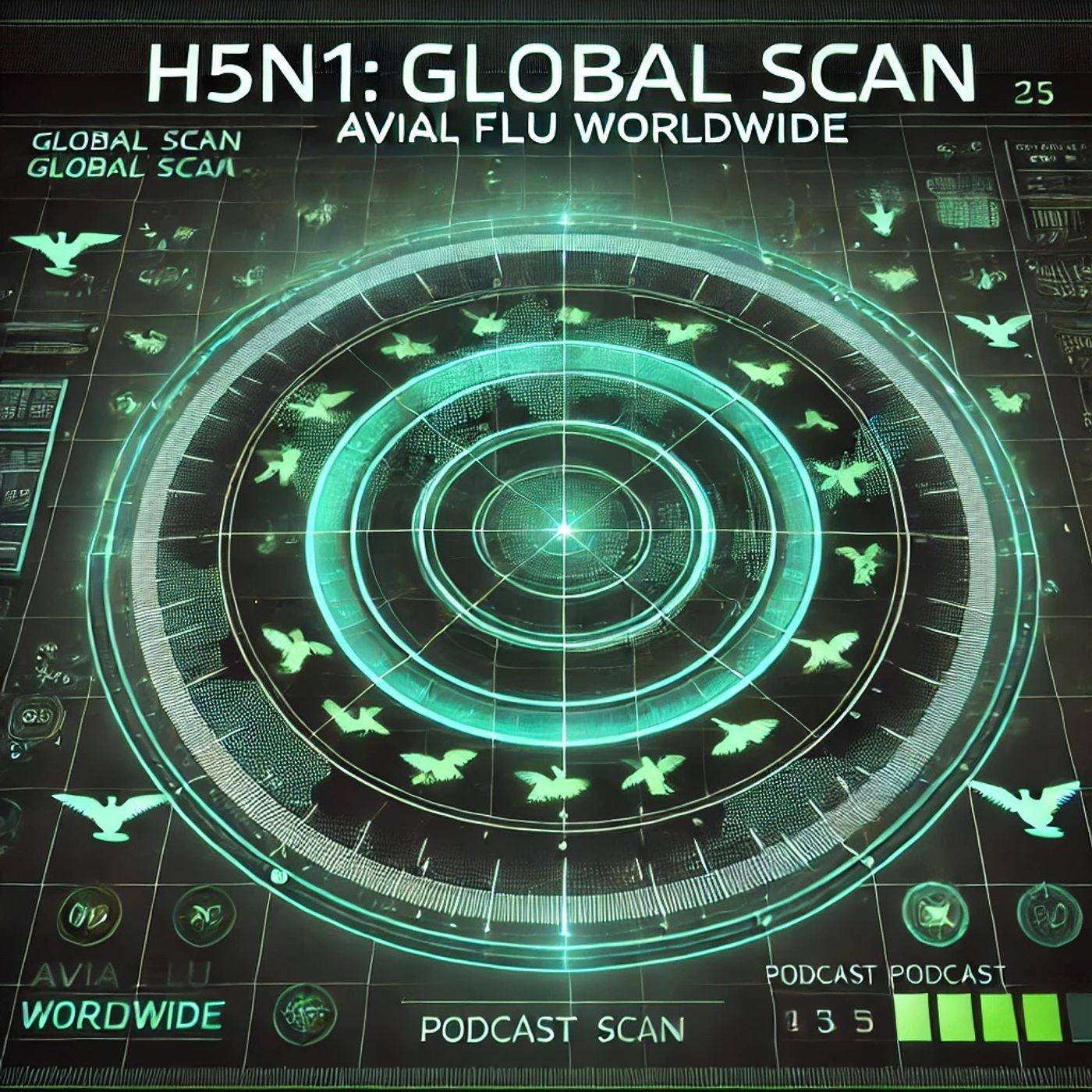Podcast Episode Details
Back to Podcast Episodes
H5N1 Avian Flu Spreads Globally: 964 Human Cases Reported Worldwide with Unprecedented Cross Species Transmission
Welcome to H5N1 Global Scan: Avian Flu Worldwide. I'm your host bringing you the latest on the continuing global avian influenza crisis.
The World Health Organization reports that since 2003, 964 human cases of H5N1 have been documented globally with 466 deaths, representing a devastating 48 percent case fatality rate. The Pan American Health Organization shows this highly pathogenic virus has dramatically expanded its reach since 2020, spreading from Africa, Asia and Europe to the Americas by 2021.
In the Americas, 19 countries have reported over 4,700 animal outbreaks since 2022. The United States leads with 71 human cases, including three deaths, while Canada, Chile and Ecuador have each reported single cases. The virus has particularly impacted US dairy cattle, affecting 976 herds across 17 states by February 2025.
Europe has seen significant activity with the European Centre for Disease Prevention and Control documenting 19 human cases including three deaths between June and September 2025. Asia remains a critical hotspot, with Cambodia reporting multiple fatalities in 2025, including a 28-year-old man and a toddler. India and the Philippines have also reported human cases and major poultry outbreaks.
The Food and Agriculture Organization has identified concerning viral reassortment in Southeast Asia, creating new hybrid strains that combine genetic elements from different H5N1 lineages. This genetic mixing raises alarm bells for scientists monitoring pandemic potential.
International coordination efforts center on WHO surveillance networks and FAO animal health monitoring systems. However, response strategies vary dramatically between nations. The United States has implemented extensive dairy herd testing and worker monitoring programs, while European countries focus heavily on wild bird surveillance and poultry sector biosecurity.
Cross-border trade impacts have been substantial. Countries worldwide have imposed poultry import bans, disrupting global food supply chains. The Philippines banned exports from multiple countries including Japan, Belgium and France, while egg shortages emerged in the US after 20 million chickens were culled in late 2024.
Vaccine development remains fragmented across regions. Multiple pharmaceutical companies are advancing H5N1 vaccine candidates, but global distribution strategies and stockpiling agreements vary significantly between developed and developing nations.
The virus continues showing unprecedented adaptability, jumping from birds to mammals including dairy cattle, sheep, and marine species. This cross-species transmission capability represents the most concerning aspect for pandemic preparedness experts worldwide.
Johns Hopkins researchers note that while 2025 has seen fewer US human cases compared to 2024, vigilance remains critical given the virus's continued circulation and mutation potential across multiple species and continents.
Global coordination challenges persist as different regions employ varying surveillance intensities, testing protocols, and containment strategies, making comprehensive worldwide tracking increasingly difficult.
Thank you for tuning in to H5N1 Global Scan. Join us next week for more international health updates. This has been a Quiet Please production. For more information, check out Quiet Please Dot A I.
For more http://www.quietplease.ai
Get the best deals https://amzn.to/3ODvOta
This content was created in partnership and with the help of Artificial Intelligence AI
Published on 16 hours ago